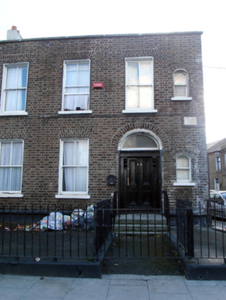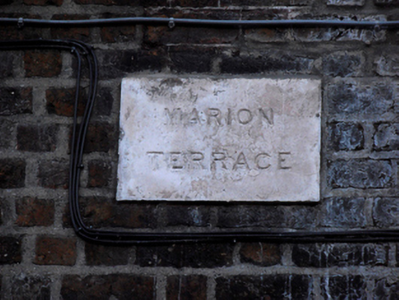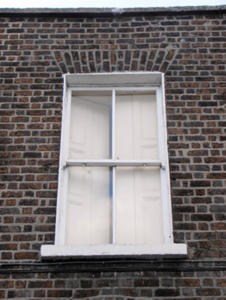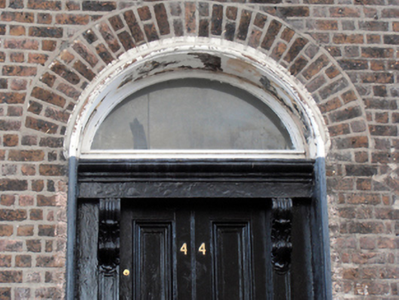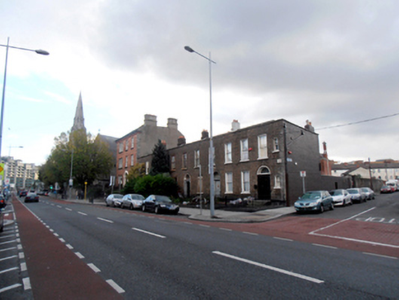Survey Data
Reg No
50010025
Rating
Regional
Categories of Special Interest
Architectural, Artistic
Original Use
House
In Use As
House
Date
1860 - 1880
Coordinates
317051, 234910
Date Recorded
26/10/2011
Date Updated
--/--/--
Description
Corner-sited end-of-terrace three-bay two-storey brown brick house, built c.1870. One of group of five. Double-pile slate roof, hipped to north, rendered chimneystacks and yellow clay pots, metal hopper and cast-iron downpipes to side (north) elevation. Brown brick walling laid down in Flemish bond over granite plinth course over rendered walling. Incised stone street name plague to north. Side (north) elevation having painted brick walling, brown brick to rear (west) elevation. Square-headed window openings with gauged brick voussoirs, rendered reveals, masonry sills and two-over-two pane timber sliding sash windows. Round-headed window openings to first and ground floors to northern bay of front elevation having single-pane sliding sashes. Original timber shutters visible to first floor windows. Round-headed door opening in moulded render surround having rendered soffit and reveals. Timber panelled door flanked by engaged pilasters having recessed panels terminating in floriate brackets supporting frieze and stepped cornice, plain glazed overlight. Door opens onto granite platform with three granite steps flanked by wrought-iron handrails. Set back from road, bounded by moulded granite plinth wall surmounted by wrought-iron railings with spike finials, hoops and corner post.
Appraisal
The southern section of Seville Place was developed after the arrival of the railway in the 1830s-40s. This terrace, built in the second half of the nineteenth century, was part of a wave of development in the area in that period, perhaps spurred on by the construction of the nearby church of Saint Laurence O'Toole, and the ecclesiastical and educational buildings which followed it. A composed terrace of five houses, the terminating houses are embellished by the attractive addition of small round-headed windows to north and south. The survival of the original fenestration and joinery contributes to the significance of the house.

